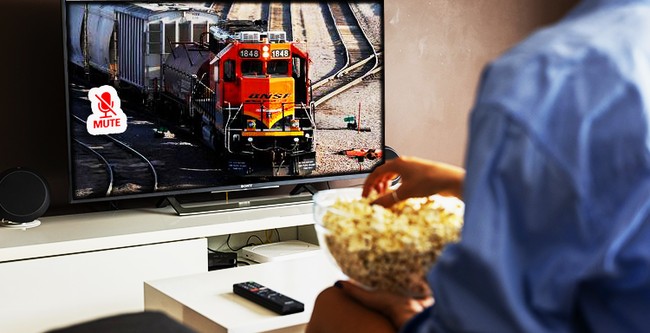
Several years ago, I was getting ready to travel to Austin, Texas, for a conference. Just out of curiosity, I looked into getting there by train. Amtrak was the only option, of course.
My trip to Austin would take 36 hours, and the route was something like Atlanta to Washington to Chicago to Austin. It would also cost twice as much as flying. Needless to say, Amtrak was totally out as an option.
Despite its impracticality and expense, the left loves to romanticize train travel. I think much of it because left-wing media types all live in the Acela corridor, where passenger rail infrastructure is plentiful. They don’t consider everyone else in “flyover states,” where travel by air or car makes more sense.
There’s another reason why the left fetishizes rail. Europe has embraced it hook, line, and sinker, and leftists are obsessed with the U.S. becoming more like Europe.
Flashback: Should We ‘Live More Like Europeans’? Of Course Not.
Sunday’s New York Times featured a column by some guy who lives in Scotland named Dan Richards. Richards fetishizes European train travel:
Recently, I’ve boarded sleeper trains in Brussels and disembarked in Vienna; bid “Gute Nacht” to Munich and “buongiorno” to Venice. Closer to home, the Caledonian Sleeper shrinks the 400-mile journey between London and Edinburgh to just 40 winks — with supper, a nightcap and breakfast en route.
Such journeys are possible on both sides of the Atlantic Ocean, but the future and fate of night trains in Europe and the United States are set on very different tracks.
In 2025, Europe’s sleeper train network has been enjoying a renaissance… The European Union has plans to double high-speed rail traffic by 2030 and link all major cities in the bloc.
Richards even uses a Swedish word, flygskam, which he says refers to “the feeling of climate guilt associated with the emissions from airline travel,” to justify this rail obsession on the continent. He contrasts this glorious love of train travel with what he views as Americans’ failure to fall for rail.
“But as Europe embraces the night train, the United States seems to be sleepwalking into a transport dead end, slashing funding for public infrastructure and firing transit workers,” Richards laments. “Long-distance public transport in America may be heading inexorably toward a binary choice: fast, exclusive and environmentally ruinous or slow, tortuous and run-down.”
Richards believes that rail’s chances of success over here are diminishing — and, like clockwork, he finds an obvious culprit.
“In President Trump’s second term, with many climate commitments and environmental protections already up in smoke, the road ahead seems clear: more gas-guzzling cars, planes, and rockets,” he yells at clouds. “The national rail system is written off as either irreparably broken (like the long-suffering Amtrak) or a mismanaged white elephant (as with several stalled high-speed rail projects).”
Side note: My colleague Rick Moran has written extensively about these bloated rail projects that never seem to get finished — no matter how much money governments throw at them.
There’s the rub. Train travel just isn’t feasible or affordable stateside, and Americans prefer the freedom that comes with the automobile.
My friend Gabriella Hoffman, who is the director of the Center for Energy and Conservation at the Independent Women’s Forum, as well as a columnist at Townhall, wrote a response to Richards’ column on her Substack.
“Americans have free will to take trains,” she declared. “Nobody is stopping you from taking a sleeper train — though the options are limited compared to Europe. But it’s not the most effective way to travel across the country. Not by a long shot.”
She admitted that rail travel makes sense in the dense metroplex around D.C. and New York City:
Amtrak makes sense from DC to NYC. I can go from downtown D.C. to NYC Penn Station in 4-4.5 hours. It makes less sense going from NYC to Rochester, NY via the Hudson River Valley. One-way, with stops, that trip can last 7-8 hours. By comparison, one can drive that same route in about 6 hours. When I traveled to Boston, I either took the metro within city limits or drove by car to travel to nearby stops in Rhode Island, New Hampshire, Vermont, or Maine.
But it just doesn’t make sense to travel by train for the vast interior of the country. Even if we had unlimited funds to build a massive rail system, Americans probably wouldn’t go for it. As much as Europe venerates train travel, the Great American Road Trip is a romantic ideal.
Scenes from American Highways: No Regrets. 🚗 pic.twitter.com/bvj7PQvBSr
— Gabriella Hoffman (@Gabby_Hoffman) May 19, 2025
It’s a point Gabriella made on X:
Driving on highways doesn’t fill me, an American, with regret.
Au contraire: There’s something freeing about the open road and choosing your destination – whether to a new or familiar place.
Road trips are the best way to appreciate America and her beauty.
— Gabriella Hoffman (@Gabby_Hoffman) May 19, 2025
Richards concludes:
Europeans have sleeper trains because we value the infrastructure, and we are the better for it. The prospect of that kind of commitment for 50 states so reliant on insular cars and planes would be a game changer. However big the United States might be, however divided about the future, revitalized railways offer an alternative way ahead. To streak across the country day or night, to see the nation pass and talk to your fellow citizens and strangers as you go: There’s surely no better time for the rediscovery and rebuilding of that American dream.
News flash for Dan Richards: Americans don’t want to become dependent on trains. We love our cars, and we tolerate air travel. And we definitely don’t want to be more like Europe; after all, we fought a war to get out of that mess.
If you enjoy stories like these, please consider becoming a PJ Media VIP. VIP membership gives you access to exclusive content and helps us in our mission to report the truth. Use the code FIGHT for 60% off!











